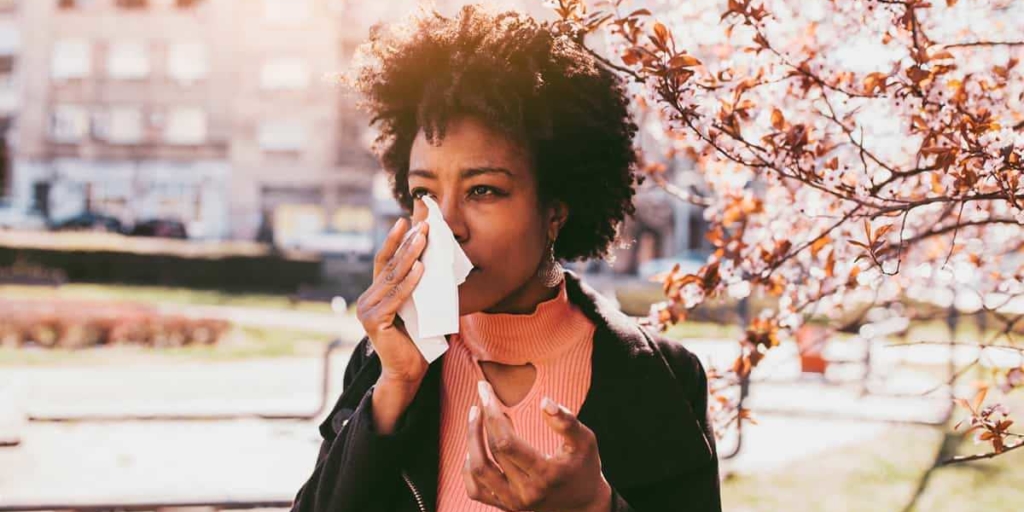Living with Fall Allergies

If you are not a seasonal allergy sufferer, you could be forgiven for thinking allergies are just a spring thing. Don’t fall for that fallacy, though. Autumnal allergies are a very real concern for many Americans, and there is nothing quite like sneezing your way through September, anxiously awaiting the relief that will come with the first freeze.
What Causes Fall Allergy Symptoms?
Part of the reason fall allergies are so torturous is there are many different allergens at play, some of which can hang around for weeks or even months. Even if you are not affected by ragweed pollen, dust mites or mold spores may be waiting for you.
Historically called “hay fever” for coinciding with the beginning of harvest season, fall allergies have nothing to do with actual hay. Formally known as allergic rhinitis, allergies are your immune system reacting more strongly than it should to elements in your environment. When you encounter normally harmless substances like ragweed pollen, your immune system goes into overdrive in an attempt to flush out the contaminant by causing sneezing, wheezing, a runny nose, and itchy, watery eyes.
If you find yourself suffering from nasal congestion in the late summer and autumn, ragweed is the plant most likely to be responsible for your distress. Ragweed pollen can travel for miles on windy days, so even if you are living in an urban context, you could be plagued by plants that are far afield from your location. Staying indoors on days when pollen counts are high is one way to avoid ragweed, but this does not mean you are completely in the clear.
If you have a ragweed allergy, late summer can bring a sense of foreboding—with itchy eyes, runny noses, coughing, and even hives waiting whether you go out or stay inside.
Keep in mind that other allergy triggers such as pet dander can be waiting for you indoors at any time of year, but spending more time inside can increase your contact with potential allergens.
Mold spores are another common cause of allergic reactions. Mold can be encountered at any time of the year, but as autumn progresses, wet leaves and decomposing plant material can provide ample opportunity for mold to grow. Staying indoors, or simply closing up windows that had been open through the warmer months, can mean you may encounter higher levels of mold in your home.
Spending more time indoors also increases your exposure to dust mites. This is especially true as kids go back to school. Entering buildings that have been empty and collecting dust all summer means dust, and dust mites, may be stirred up. School starting up for the fall is also a common way people encounter dust that has collected over the summer in under-used buildings. Outdoor activities like mowing, raking leaves can uncover dust and pollen.
What are Common Symptoms of Fall Allergies?
Aside from the time of year at which they strike, fall and spring allergies are very similar when it comes to symptoms. Below is a list of the most common symptoms of fall seasonal allergies:
- Sneezing
- Coughing
- Watery or itchy eyes
- Itchy nose
- Runny or stuffy nose
You may experience only a few of these or the entire list. Whatever your particular symptoms, they can be quite bothersome, especially since fall allergies can last for several weeks or even months. In northern regions, pollen levels typically drop sharply with the first frost or snow of the season, but this is not the case in warmer regions.
How Are Fall Allergies Treated?
You may find that taking allergy medication such as over-the-counter decongestants or antihistamines is enough to get you through your seasonal allergies. You can take other precautions such as using a dehumidifier fitted with a HEPA filter to scrub the air in your home and remove potential allergens. Wearing a dust mask when raking leaves or cleaning potentially dusty areas of your home can also help.
If your symptoms become too severe or are not responding to commonly available drugs, it may be time to talk to your doctor. Your physician will likely then refer you on to someone who specializes in treating allergies, known as an allergist.
Finding relief from fall allergens will start by sorting out what exactly is causing your suffering. Your allergist will put you through a series of tests to determine exactly what your immune system is trying to attack. Typically, this will involve a “scratch test” where multiple scratches are made in the skin of your arm or back with each scratch carrying a small amount of a potential irritant. Recently, faster, more effective tests have come on the market to replace this diagnostic tool.
More involved treatments are available if your allergies are severe and life-impacting. Immunotherapy is one form of this advanced treatment, which involves injections over a long period of time designed to reduce your sensitivity to allergens. Less invasive forms of immunotherapy include allergy drops, where a solution is placed under your tongue rather than needing to have repeated injections. These are not available for all types of allergens, but the FDA has approved them for ragweed pollen, which is one of the most common causes of fall allergies.
TrustCare Allergy Treatment
If you have finally had enough of the coughing, sneezing, and wheezing of your seasonal allergies, visit us at one of our TrustCare locations. We can find a treatment that will help you reclaim your life from the drudgery of seasonal allergies.
